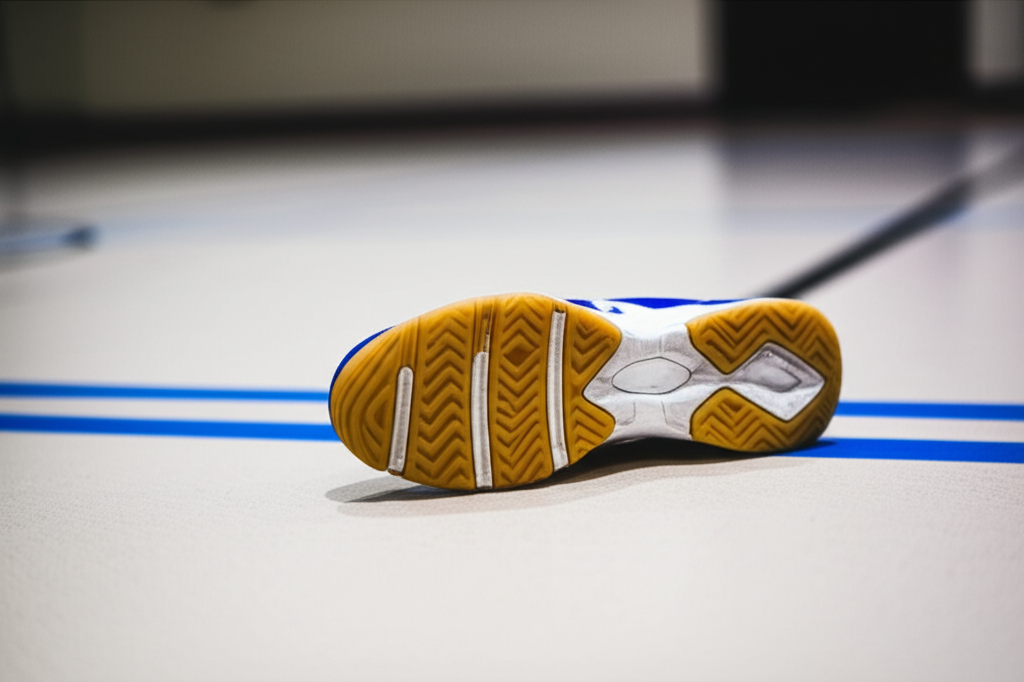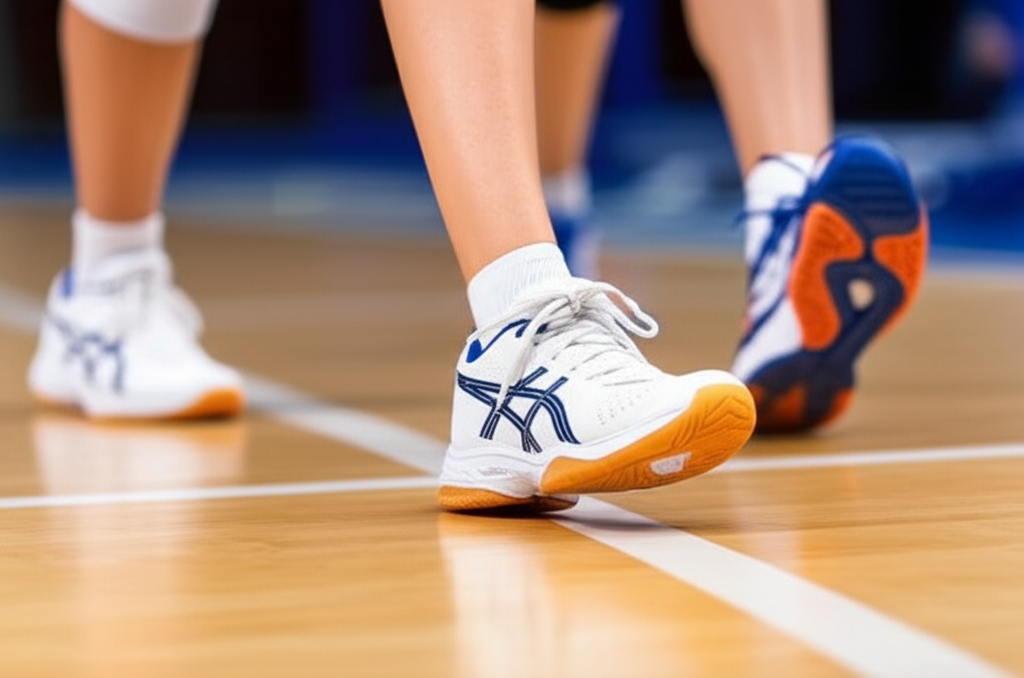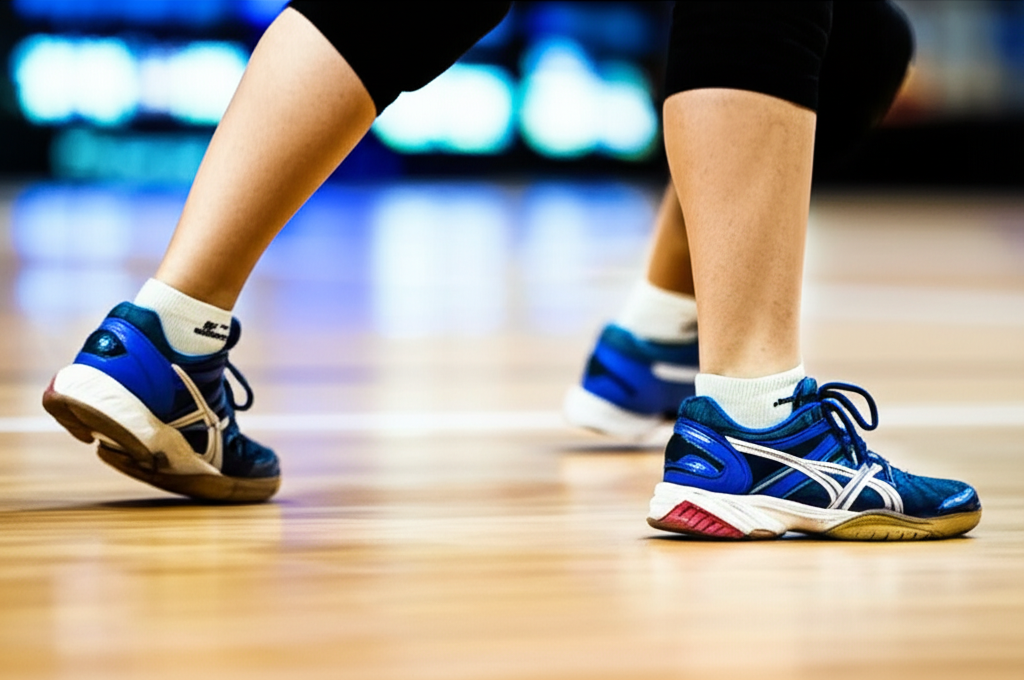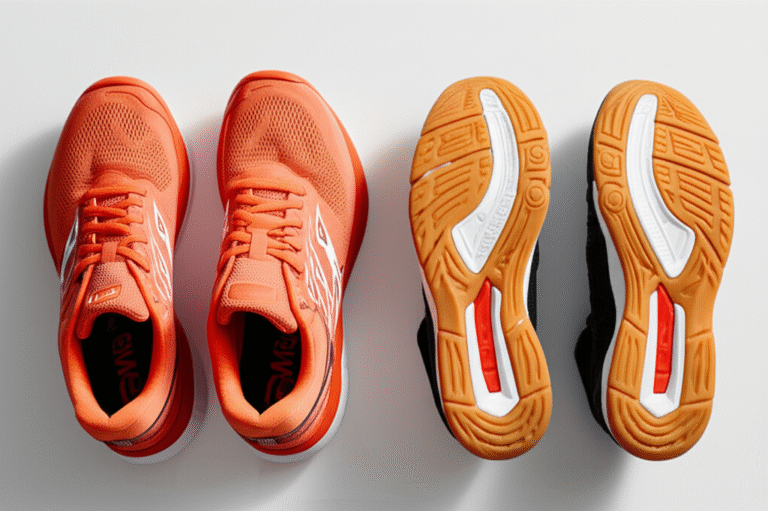Are Running Shoes Good for Volleyball? The Shocking Truth!
No, running shoes are generally not good for volleyball. While they offer cushioning for forward motion, they lack the lateral support and grip needed for the quick, multi-directional movements inherent in volleyball. Using them can increase your risk of injury.
Key Takeaways
- Running shoes lack essential lateral support for volleyball.
- Volleyball shoes provide superior grip for court surfaces.
- Running shoes can hinder quick directional changes.
- Specialized volleyball shoes reduce injury risk.
- Consider your sport’s unique demands when choosing footwear.
- Prioritize stability and traction for optimal volleyball performance.
Stepping onto the volleyball court for the first time, or even as an experienced player, you’re probably wondering about the best gear. One common question that pops up is: “Are running shoes good for volleyball?” It seems logical, right? Both involve movement and require comfortable footwear. However, the answer might surprise you. The truth is, what works for pounding the pavement isn’t ideal for the dynamic demands of a volleyball game. This guide will break down exactly why, helping you make the best footwear choice for your game and keep you safe on the court.
Why the Confusion? Understanding Shoe Design
It’s easy to see why many beginners, and even some seasoned athletes, might assume running shoes are a versatile option for various sports. After all, they’re designed for athletic performance, right? They offer cushioning, support, and are built for movement. But here’s where the distinction becomes crucial: different sports demand very different types of movement, and therefore, very different types of footwear.
Running is primarily a linear activity. Your feet move forward, with some slight side-to-side motion. Running shoes are engineered with this in mind. They prioritize shock absorption for the repetitive impact of your feet hitting the ground and provide a smooth transition from heel strike to toe-off. They are built to guide your foot efficiently in a straight line.
Volleyball, on the other hand, is a game of explosive, unpredictable movements. You’re constantly jumping, landing, diving, shuffling sideways, and cutting quickly in various directions. This requires a shoe that can handle a multitude of forces, not just the forward impact of running. The unique demands of volleyball necessitate specialized features that running shoes simply don’t possess.
The Core Differences: Running Shoes vs. Volleyball Shoes

Let’s dive deeper into the specific design elements that set running shoes and volleyball shoes apart. Understanding these differences is key to appreciating why one is suitable for its intended purpose, while the other is not for a different sport.
1. Lateral Support: The Unsung Hero of the Court
Volleyball players spend a significant amount of time moving side-to-side. Think about digging a low ball, shuffling to cover a hit, or moving into position for a block. This lateral movement puts a lot of stress on your ankles and feet. Volleyball shoes are designed with robust lateral support. This often comes in the form of reinforced sidewalls and a wider base that helps prevent your foot from rolling over the edge of the shoe during quick cuts and changes in direction.
Running shoes, conversely, offer minimal lateral support. Their construction is geared towards forward motion, and the sides of the shoe are often made of lighter, more flexible materials to allow for natural foot flexion during the running stride. When you try to make a quick sideways cut in running shoes, your foot can easily slide within the shoe, or the shoe itself can roll, leading to instability and a high risk of ankle sprains. According to the National Institutes of Health, ankle sprains are among the most common sports-related injuries, and inappropriate footwear is a significant contributing factor.
2. Traction and Grip: Sticking the Landing
The volleyball court surface, usually hardwood or a synthetic material, requires a specific type of grip. You need to be able to plant your feet firmly for powerful jumps, stop on a dime, and push off explosively without slipping. Volleyball shoes feature outsoles made from specialized rubber compounds designed to provide maximum traction on these indoor court surfaces. The tread patterns are often intricate, creating numerous contact points with the floor to ensure stability.
Running shoes are designed for different surfaces – roads, trails, or track. Their outsoles typically have deeper lugs or a different rubber composition to provide grip on varied outdoor terrain. While they offer good traction for forward motion, this same tread pattern can be too “sticky” on a smooth indoor court, potentially leading to knee injuries if your foot can’t slide slightly when you pivot. Conversely, if the rubber compound isn’t right for the indoor surface, you’ll experience slippage, which is equally dangerous.
3. Cushioning and Shock Absorption
This is where running shoes excel, and it’s likely why they seem appealing. Running involves repetitive impact with the ground. Running shoes have advanced cushioning systems, often in the heel and forefoot, to absorb this shock and reduce stress on your joints. This is crucial for long-distance running or high-mileage training.
Volleyball also involves jumping and landing, which creates impact. However, the nature of the impact is different. Volleyball jumps are often more explosive, and landings can be more dynamic, involving quick adjustments. Volleyball shoes provide cushioning, but it’s often tuned differently. They might offer more cushioning in the forefoot to support explosive take-offs and landings, and the cushioning is integrated with the shoe’s stability features. Overly soft cushioning, as found in some running shoes, can make your foot feel less stable and responsive during the quick, precise movements required in volleyball.
4. Weight and Flexibility
Running shoes can vary in weight, but many are designed to be lightweight to facilitate speed and efficiency over distance. They also tend to be more flexible, allowing the foot to move naturally through the running stride. This flexibility is great for running, but it can be a detriment in volleyball. The increased flexibility in a running shoe means less structural support when you’re making sudden lateral movements or needing to hold a stable base for a jump.
Volleyball shoes are typically designed to be lighter than basketball shoes but offer more structure and less overall flexibility than running shoes. This balance provides the responsiveness needed for quick movements without sacrificing the support required for jumps and landings. The aim is a shoe that feels like an extension of your foot, allowing for agility while keeping you secure.
The Risks of Wearing Running Shoes for Volleyball
Now that we’ve highlighted the design differences, let’s talk about the tangible risks associated with using running shoes on the volleyball court. These aren’t minor inconveniences; they can lead to serious injuries that sideline you from the game.
Increased Risk of Ankle Sprains
As mentioned, the lack of robust lateral support in running shoes is a major red flag for volleyball. When you plant your foot to change direction, your ankle is particularly vulnerable. Without the stabilizing structure of a volleyball shoe, your ankle can roll inward or outward too far, leading to a sprain. These injuries can range from mild discomfort to severe ligament tears requiring significant rehabilitation.
Reduced Agility and Performance
Volleyball demands quick feet and the ability to accelerate, decelerate, and change direction instantly. Running shoes, with their focus on forward motion and often softer, less responsive cushioning, can hinder this. They can make you feel sluggish, less agile, and less able to make those split-second movements that are crucial for making a great play.
Potential for Foot and Knee Injuries
The improper support and traction can also lead to other issues. If your foot is unstable within a running shoe during lateral movements, your body might compensate in ways that put undue stress on your knees and other joints. The different shock absorption profiles can also mean that the impacts from jumping and landing aren’t distributed as effectively, potentially leading to foot pain or even stress fractures over time.
Slipping and Falls
The outsole of a running shoe is not optimized for indoor court surfaces. This can lead to unexpected slips, especially during quick movements or when trying to stop. Falling on a hard court can result in bruises, sprains, or more serious injuries.
What to Look for in Volleyball Shoes
If running shoes aren’t the answer, what should you be looking for? Choosing the right volleyball shoes is an investment in your performance and, more importantly, your safety. Here are the key features to prioritize:
1. Excellent Grip and Traction
This is paramount. Look for shoes with non-marking rubber outsoles specifically designed for indoor courts. The tread pattern should offer a good balance of grip for quick stops and slight slip for controlled pivots. Brands often highlight their proprietary rubber compounds for optimal traction.
2. Superior Lateral Support
The shoe should feel stable from side to side. Check for reinforced uppers, especially around the midfoot and heel, and a relatively flat, wide base. When you try on shoes, stand with your feet shoulder-width apart and try a few gentle side-to-side shuffles. The shoe should feel secure and supportive, with minimal wobbling or foot slippage.
3. Responsive Cushioning
While you need cushioning for jumps, it shouldn’t be overly soft or mushy. Look for shoes that offer good shock absorption, particularly in the heel and forefoot, but that also provide a responsive feel. This means the cushioning helps you spring back up, rather than absorbing all your energy.
4. Lightweight and Breathable Design
You’ll be moving a lot, so a lighter shoe can help reduce fatigue. Breathability is also important to keep your feet cool and comfortable throughout a game or practice. Mesh uppers are common and effective for this.
5. Secure Fit
A snug fit is essential. Your heel should not lift when you walk or jump, and your toes should have a little room to move without being cramped. Laces should allow you to cinch the shoe down securely around your foot. Some volleyball shoes also feature a higher ankle collar for added support, though this is a matter of personal preference.
Comparing Volleyball Shoe Features

To help visualize the differences, consider this comparison table:
| Feature | Running Shoes | Volleyball Shoes |
|---|---|---|
| Primary Movement | Linear (forward) | Multi-directional (forward, backward, lateral, jumping) |
| Lateral Support | Minimal | High |
| Traction | Designed for roads/trails; can be too grippy or slippery on indoor courts | Optimized for indoor courts; excellent grip and controlled slip |
| Cushioning | Emphasis on shock absorption for repetitive impact | Balanced for explosive jumps and responsive landings; integrated with stability |
| Flexibility | High, especially in the forefoot | Moderate; provides structure and support |
| Weight | Varies, often lightweight for efficiency | Generally lightweight, but prioritized for support and stability |
| Sole Design | Deeper lugs or varied patterns for outdoor grip | Flat, sticky rubber with specific tread for indoor court grip |
Pro Tip:
When trying on volleyball shoes, wear the same type of socks you’ll use for playing. This ensures an accurate fit and helps you feel how the shoe will perform during actual gameplay.
Other Court Sports Footwear Considerations
It’s worth noting that while running shoes are not suitable for volleyball, other court sports might share some similarities in footwear needs. For instance, basketball shoes also require good ankle support and traction for lateral movements and jumping. However, basketball shoes are often heavier and offer more ankle padding than volleyball shoes, as the demands of basketball involve more frequent and higher impact landings, as well as more aggressive cutting. Tennis shoes are designed for quick, lateral movements on a court surface but may not offer the same level of cushioning or support for the vertical jumping characteristic of volleyball.
The key takeaway is that each sport’s unique biomechanical demands necessitate specialized footwear. Trying to make one type of shoe fit multiple very different activities often leads to compromises in performance and safety.
Finding the Right Fit and Brand

When you’re ready to buy, consider these tips for finding the perfect pair:
- Try Before You Buy: Whenever possible, go to a sporting goods store and try on different models. Walk around, do some small jumps, and shuffle your feet.
- Consider Your Position: While most volleyball shoes are versatile, some players might prefer slightly different features. For example, setters might want a lighter, more agile shoe, while blockers might appreciate extra cushioning for landings.
- Research Brands: Popular volleyball shoe brands include ASICS, Mizuno, Nike, and Adidas. Each offers various models with different technologies and fits. Reading reviews can be helpful, but personal fit is king.
- Don’t Be Afraid to Ask for Help: Store employees who specialize in athletic footwear can offer valuable advice.
The science behind athletic shoe design is fascinating. For an in-depth look at biomechanics and footwear, you might find resources from organizations like the American Orthopaedic Foot & Ankle Society to be informative regarding foot health and injury prevention.
Frequently Asked Questions (FAQ)
Q1: Can I wear my old running shoes for a casual volleyball game?
While you might get away with it for a very casual, low-intensity game, it’s still not recommended. Even in a casual setting, the risk of ankle rolls or slips is present. It’s always better to protect yourself with appropriate footwear.
Q2: Are basketball shoes okay for volleyball?
Basketball shoes offer better lateral support than running shoes, making them a closer option. However, they are often heavier and designed for different court dynamics. Dedicated volleyball shoes are generally preferred for optimal performance and safety.
Q3: How often should I replace my volleyball shoes?
This depends on how often you play and the intensity. Generally, if you play regularly (2-3 times a week), you might need to replace your volleyball shoes every 6-12 months. Look for signs of wear on the outsole, cushioning that has lost its responsiveness, or any signs of damage to the upper.
Q4: Do I need special socks for volleyball?
You don’t necessarily need “special” socks, but wearing moisture-wicking athletic socks is highly recommended. They help manage sweat, prevent blisters, and contribute to a better overall fit within your shoes.
Q5: What if I have flat feet? Can I still wear volleyball shoes?
Yes, many volleyball shoes can accommodate players with flat feet. You might want to look for shoes with good arch support or consider using custom or over-the-counter orthotics inside your volleyball shoes. Trying on different brands and models is key to finding what feels best for your foot type.
Q6: Is it okay to wear tennis shoes for volleyball?
Tennis shoes are designed for lateral movement on a tennis court, which is somewhat similar to volleyball. However, they may lack the specific cushioning and ankle support needed for the jumping and landing demands of volleyball. Volleyball shoes are still the superior choice.
Conclusion: Prioritize Performance and Safety
So, are running shoes good for volleyball? The short, and perhaps shocking, answer is no. While they provide excellent cushioning for their intended purpose, they critically lack the lateral support, specialized traction, and balanced cushioning that volleyball demands. Wearing running shoes on the court significantly increases your risk of injuries like ankle sprains, and can hinder your agility and overall performance.
Investing in a good pair of volleyball-specific shoes is one of the smartest decisions you can make as a player. They are engineered to protect your feet and ankles, enhance your agility, and provide the necessary grip for quick movements, explosive jumps, and secure landings. By understanding the unique demands of the sport and the features of proper volleyball footwear, you can confidently choose shoes that will support your game and keep you playing safely and effectively. Happy playing!

